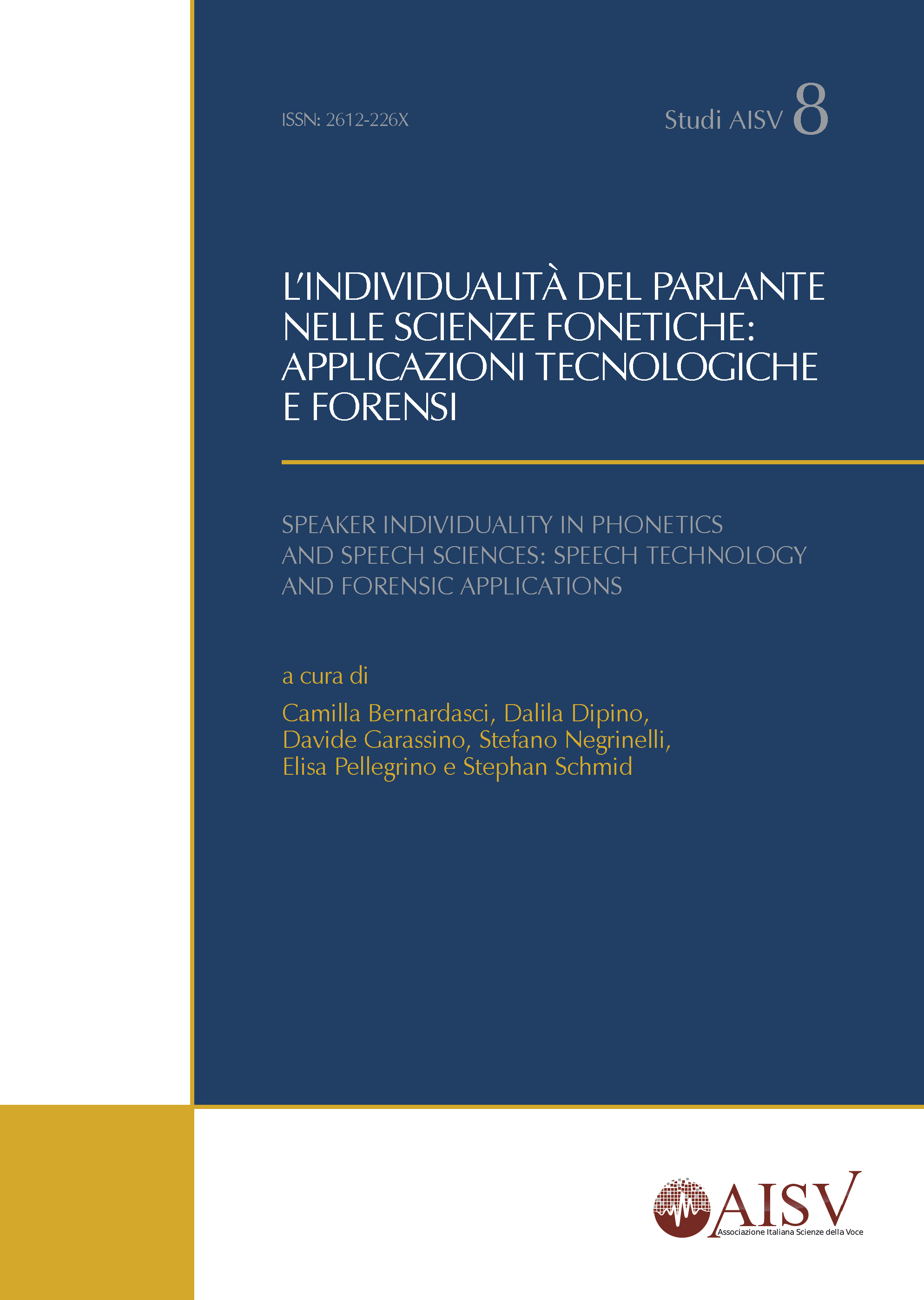A cross-linguistic study of between-speaker variability in intensity dynamics in L1 and L2 spontaneous speech
DOI:
https://doi.org/10.17469/O2108AISV000009Keywords:
inter-speaker, cross-linguistic, variability, intensity, dynamicsAbstract
Dynamic aspects of the amplitude envelope appear to reflect speaker-specific information. Intensity dynamics characterized as the temporal displacement of acoustic energy associated to articulatory mouth opening (positive) and closing (negative) gestures was able to explain between-speaker variability in read productions of native speakers of Zürich German. This study examines positive and negative intensity dynamics in spontaneous speech produced by Dutch speakers using their native language and English. Acoustic analysis of informal monologues was performed to examine between-speaker variability. Negative dynamics explained a larger quantity of inter-speaker variability, strengthening the idea of a lesser prosodic control over the mouth closing movement. Furthermore, there was a significant effect of language on intensity dynamics. These findings suggest that speaker-specific information may still be embedded in these time-bound measures despite the language in use.
Downloads
Published
Issue
Section
License

This work is licensed under a Creative Commons Attribution-NonCommercial 4.0 International License.





